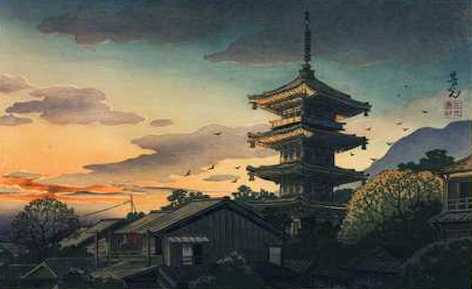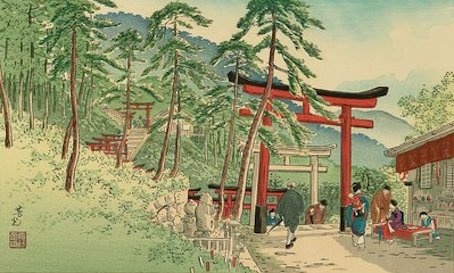Japan Art and Nomura Yoshimitsu: Kyoto (Buddhism and Shinto)
Lee Jay Walker
Modern Tokyo Times

Nomura Yoshimitsu (1870-1958) was born during the revolutionary Meiji Period. The three prints in this article belong to the Famous Places of Kyoto series completed during the early Showa Period.
Above is the Yasaka Buddhist Pagoda, which can trace its roots back to the seventh century (early foundations). However, many calamities befell this Buddhist Pagoda.

Buddhism and Shinto (the indigenous faith) have shaped Japan through long periods of its history. Confucianism and Taoism (Daoism) – notably Confucianism – also impacted the land of the rising sun.
The Fushimi Inari Shinto Shrine in Kyoto continues to attract pilgrims and tourists alike – in modern times. On the website of this Shinto shrine, it says, “In the 1300 years since its establishment in 711AD, people have gathered here to pray for bountiful harvests, business prosperity, the safety of their home and family and the fulfillment of all kinds of other wishes.”

The final print is the Hirosawa Pond area in Kyoto. Hence, Nomura Yoshimitsu provides a lovely mix of faith and nature – in these three prints.
https://inari.jp/en/ Fushimi Inari Shinto Shrine

Modern Tokyo News is part of the Modern Tokyo Times group
http://moderntokyotimes.com Modern Tokyo Times – International News and Japan News
http://sawakoart.com – Sawako Utsumi’s website and Modern Tokyo Times artist
https://moderntokyonews.com Modern Tokyo News – Tokyo News and International News
PLEASE JOIN ON TWITTER
https://twitter.com/MTT_News Modern Tokyo Times
PLEASE JOIN ON FACEBOOK